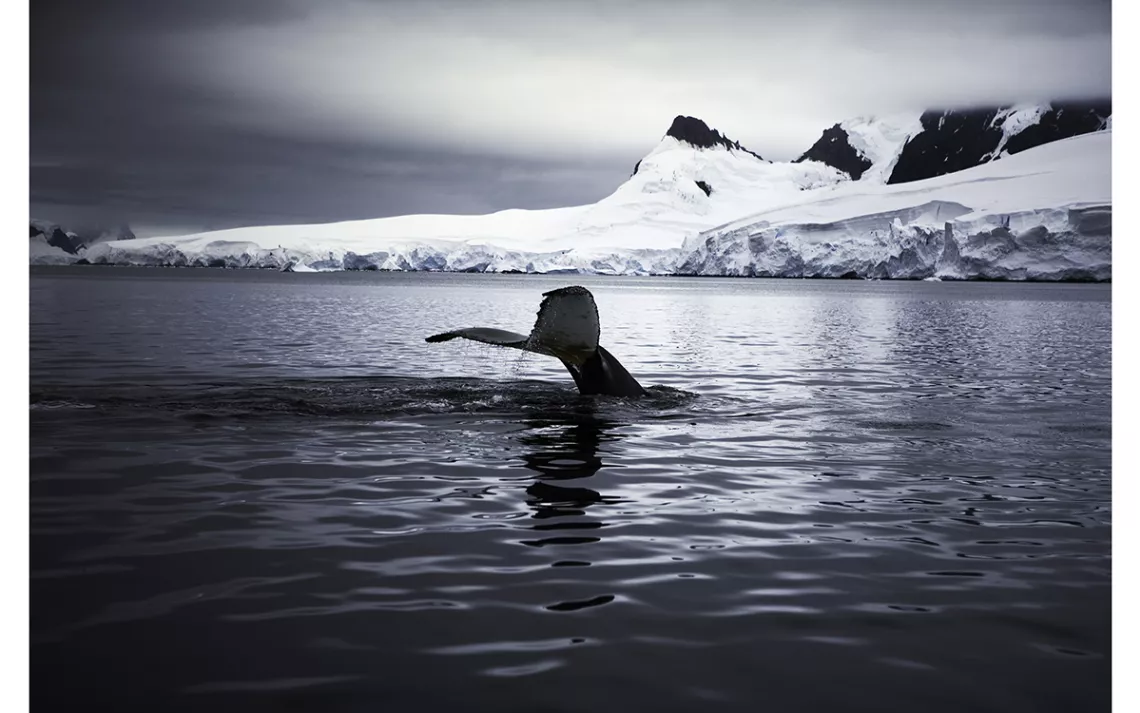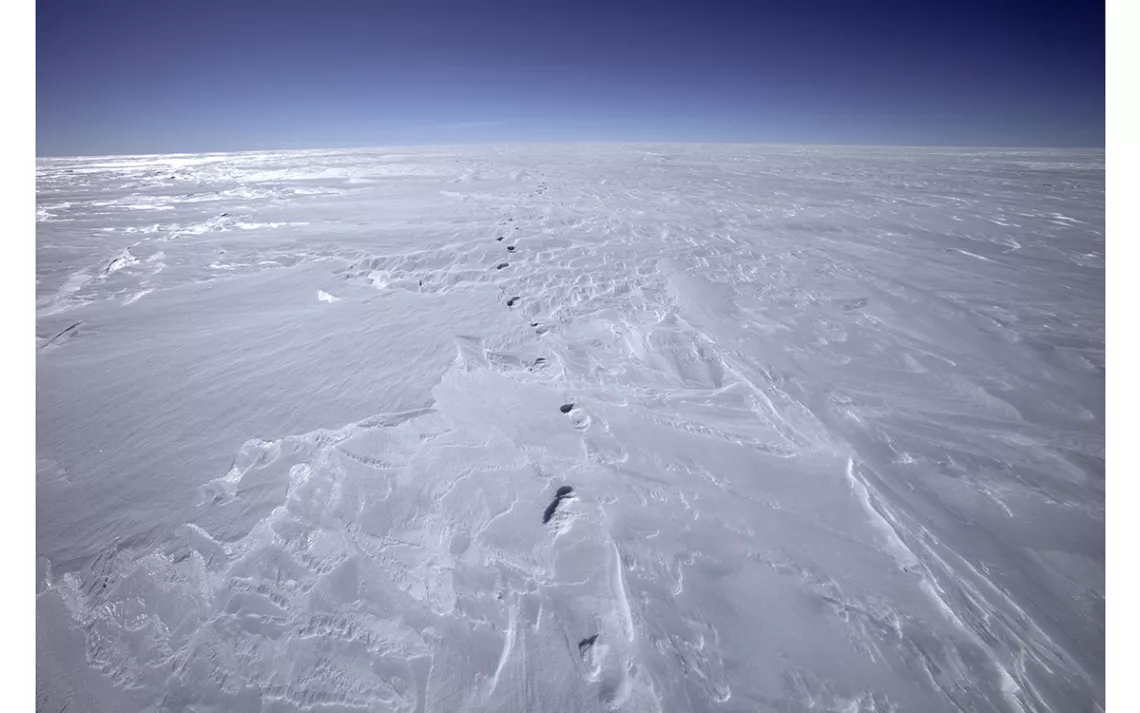“Antarctica: The Waking Giant” Brings a Faraway Landscape up Close
Photographer Sebastian Copeland spends months on the ice with his camera
Photos by Sebastian Copeland
Sebastian Copeland was a lonely kid. Feeling out of place at school, he escaped into adventure novels, tearing through Jack London’s books and devouring biographies of famous explorers.
His curiosity about the world also found another outlet: the camera. He doesn’t recall when he picked up photography as a hobby, but it became a natural extension of his engagement with the world.
“The camera was a tool of both companionship and expression,” he said.
Copeland’s first—and favorite—subject was nature. In college, he studied geology and glaciology, taking photos on the side. He spent his early career in commercial photography but never let go of his dreams of adventure. He’d spend weeks living out of his car in Baja, surfing every day. When he wasn’t working, he was rock climbing, mountaineering, windsurfing.
All the while, he got more and more concerned about climate change and more convinced he had to do something about it. Dissatisfied with his commercial work, he searched for fulfillment.
Then in 2006, he saw his chance both for adventure and a higher purpose. He claimed a spot on a scientific research vessel headed to Antarctica. Photographing Antarctica’s coastline from the ship, often while buffeted by storms, was hard enough. Then Copeland stepped on land where he faced extreme temperatures and blinding whiteouts. Taking photos in the cold interior was brutal, but he was determined to capture as much as he could.

Copeland spent two seasons aboard the research vessel, then set out to traverse the giant, icy continent on foot. In 2011, he and his partner, Eric McNair-Landry, became the first to cross Antarctica via two of its poles: the South Pole and the Pole of Inaccessibility. It took 84 days to cross the 2,500 miles on skis. Since then, he’s made several return trips.
His obsession with Antarctica has resulted in three photo books (he has also published a book on the Arctic). The latest, published this fall, is Antarctica: The Waking Giant.
The book’s images portray the continent in stunning, varied detail: young penguins huddling for warmth, a storm brewing overhead, great arches of ice turned blue in the shade. The pictures, Copeland said, are meant to tug at the heart. He hopes their beauty serves as bait, bringing his readers into a broader conversation about climate change and human impact. Throughout the book, Copeland offers mini-lessons on glaciology, explanations of how air pollution is darkening our ice, and warnings about how politicized science has become.
Copeland loves science, but he thinks it's a pretty poor communication tool. Science exists mostly in the mind, he said, while art gets straight to the heart. “My role in life is to create that bridge between the heart and the mind,” Copeland said. “We won't save what we don't care for.”
When traveling on Antarctica, he often feels like he and his partner are the last humans on Earth. The harshness of the landscape and the threat of injury keeps him focused, and the months he spends on the ice feel like a long meditation.
The hardest part about getting the shots, Copeland said, is getting to the continent. He likes to say that 95 percent of success is access, and that curiosity makes him a good photographer.
Copeland believes that the biggest misconception people have about Antarctica is that it's a faraway, otherworldly place. But what happens in Antarctica affects the rest of the world: The melting of its ice could change our coastlines, our currents, and our weather.
“We live in a limited biosphere. Everything happens within this globe,” Copeland said. “There may be other great worlds, but this is the one we have.”
 The Magazine of The Sierra Club
The Magazine of The Sierra Club










